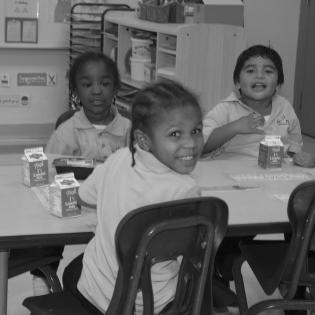Learning Opportunities around the World
Through discussion and a game, children identify the value of education to individuals and the community.
The learner will:
- state positive outcomes of school benefitting self and community.
- community: a group of people that live, work, or play together, who have common interests, or who regularly interact with one another
- family: parents and their children; the members of a household
Instructions
Anticipatory Set:
Explain to children that in the United States, public school is funded through the government and all children must go. Ask the children why educating everyone is important to our world? What is it important to learn in school in order to live a full life?
Brainstorm some things that people can do in life because they learn the skills at school; things that help them do well in life and things that help the community do well. Examples include read the newspaper, solve problems, get along with others, count money, and read to learn.
Tell children that in many countries school is very expensive and takes children away from work they need to do at home, and a family might be able to send only one child or no children at all. In some societies, people don't send girls to school. Discuss fairness and missed opportunities for those children who can't go to school. How does it hurt the whole community? Talk about how it would feel for yourself, your family, and your community if only one child per family can go.
Play Community I-Spy. Explain to children that school is a type of community where students participate in activities together and share "common" resources. Have them think of items for I-Spy that are shared by all and help the school community learn and work together. For example, textbooks, the whiteboard, the playground, or the library. One child starts the game by saying, “I spy (name one attribute of a shared resource).” The other children try to guess what the object is and identify how it is a part of the school "commons." When they guess the object, another child selects a different object for the group to discover.
Prompt the participants with these questions:
- What things are part of the school community?
- How does (name of object) make our school community a good place to learn?
- Does every school community need (name of object) to be a good place to learn?
- What classroom behaviors help our community? How and why?
- Is our school a community because we share resources? Why or why not?
Philanthropy Framework
-
Strand PHIL.II Philanthropy and Civil Society
-
Standard PCS 03. Philanthropy and Economics
-
Benchmark E.9 Identify the "commons" in the school and neighborhood.
-
-
Standard PCS 05. Philanthropy and Government
-
Benchmark E.1 Define community as the degree that people come together for the common good.
-
Benchmark E.7 Describe why the classroom, school, or neighborhood is a community governed by fundamental democratic principles.
-
Benchmark E.8 Describe classroom behaviors that help the students learn.
-
-
